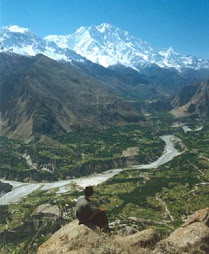 Shining Wall' is what Gasherbrum means in local language. Gasherbrum peaks are situated in the northern area of Pakistan. There are six Gasherbrum peaks in Pakistan, which are known as Gasherbrum I, Gasherbrum II…to Gasherbrum VI.
Shining Wall' is what Gasherbrum means in local language. Gasherbrum peaks are situated in the northern area of Pakistan. There are six Gasherbrum peaks in Pakistan, which are known as Gasherbrum I, Gasherbrum II…to Gasherbrum VI.Gasherbrum I, also known as 'Hidden Peak' is the 11th highest peak in the world with the height of 8,068 metres. Though many expeditions have climbed the Gasherbrum I, but the first attempt to scale the peak was done in 1936 by a French Expedition led by H. De Segogne but they could not scale the mountain beyond 6,797 metres. It was in 1958 that an American Expedition reached the summit of the Gasherbrum I. The route to the base camp is from Skardu through Shigar Valley then you have to trek from Askole through Baltoro glacier.
Tour to Pakistan brings you complete information on various tourist destinations in Pakistan. Pakistan is popular for adventure sports and Tour to Pakistan offers a number of adventure tour packages. Tour to Pakistan promises to offer you all the help to make your tour to Pakistan an exciting and memorable affair. For mountaineering tours or hotel bookings in Pakistan, all you have to do is just fill up the form given below. Tour to Pakistan will get back to you














